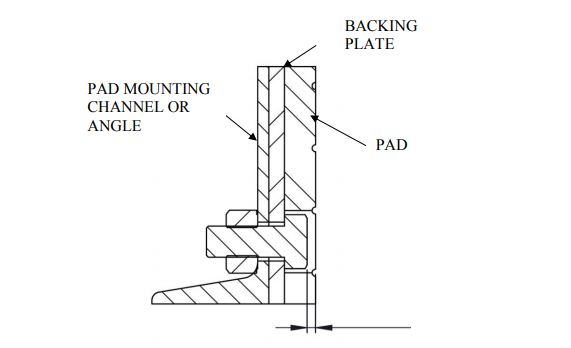How Much Does the Pipe Lifter Weigh?
- Pipe Lift Model
- PL1500
- PL2000
- PL2150
- PL2250
- PL2500
- PL2750
- PL3000
- PL3500
- PL4500
- PL7000
- PL8500
- Weight / Shipping Weight (LB)
- 200
- 225
- 240
- 330
- 350
- 410
- 550
- 580
- 1250
- 1600
- 1750
Check orientation of arrowhead in receiver block.
Angled arrowhead: means the actuator was forced out of phase into slot causing shaft to twist. Replace actuator.
Straight arrowhead: check lifter for obstruction, over tightened bolts etc. preventing operation.
Your Kenco lifter should be removed from service until re-certification by a qualified in if it does not pass any of the Inspection Criteria in the manual. Examples include visible distortion is any bolt/shaft/pin/member; cracking in any weld/component/member; 20% loss in cross-sectional area from original member in the lift bail; 10% loss in cross-sectional area from the original member in relation to intended holes (such as bolt holes). *typically found near page 8 in the barrier lift manual
You should be performing daily inspections if using daily and prior to starting any new job if the lifter has been sitting. This includes checking pad wear, snugness of bolts, lubrication of actuator (WD-40), free rotation of pad angles. Annually the pivot bolts and washers should be greased, all above inspections in paragraph 1 should be made, remove and clean with lubricating oil (NOT grease) the actuator.
If there are ever any concerns about the lifter you are using, we strongly suggest taking pictures and sending to our sales@kenco.com email address along with any and all details you can provide.
Yes, you can replace this. It is adhered with a 3M adhesive and we can provide that for you as well, just ask.
Pricing for the rubber kits are as follows.
PL1500 Rubber Liner – $39.50
PL2000 Rubber Liner – $44.50
PL2150 Rubber Liner – $47.00
PL2250 Rubber Liner – $50.00
PL2500 Rubber Liner – $55.50
PL2750 Rubber Liner – $78.50
PL3000 Rubber Liner – $86.00
PL3500 Rubber Liner – $133.75
PL4500 Rubber Liner – $169.50
In order to catch any issue quickly, we recommend doing a quick check on your lifter at the start of each work day it will be used. Perform the following:
Pads (also at start of the work day)

Replace pads if:
Replacement pads can be found https://kenco.com/store/#pads
Yes, click here to fill out a request. Include details on project, item(s) being moved and include spec sheets if available.
Yes. We can ship internationally. Crating, insurance and freight charges will need to be calculated prior to purchase. For international sales questions, please contact our sales team directly.
